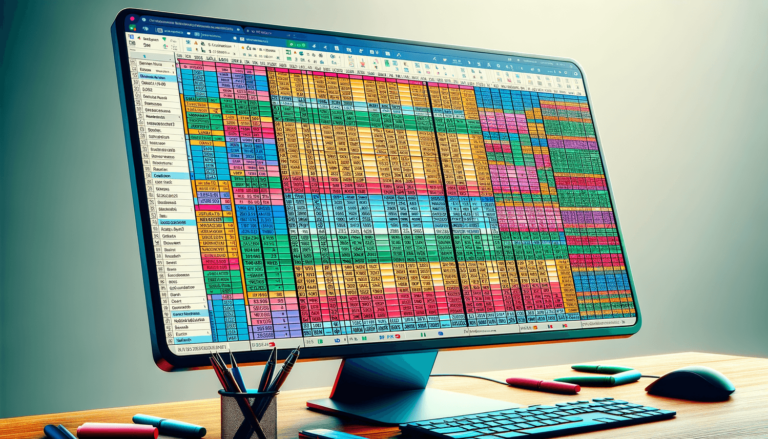

If you have ever worked with a large dataset in Microsoft Excel, you understand the importance of filtering columns to get the information you need quickly and efficiently. Filtering allows you to hide or display rows based on specific criteria, making it easier for you to find what you are looking for. Whether you’re a beginner or an advanced user, learning how to filter columns in Excel is an essential skill to have in your toolbox. In this blog post, we’ll show you how to filter columns using two methods in Excel: the AutoFilter feature and the Advanced Filter feature.
Excel is the world’s most popular spreadsheet program designed by Microsoft. One of the critical functions of Excel is filtering. By filtering, we mean reducing the amount of data in a table based on specific criteria. When you filter data in Excel, you hide everything except what you want to see.
The Autofilter method is one of the easiest ways to filter data in Excel. This method provides an easy interface for users to specify the type of data to filter. The Autofilter method, once applied, sorts the table and displays only specified columns in a separate space. Here are the steps to follow if you want to filter data in Excel using the Autofilter method:
The advanced filter method, on the other hand, provides more precise control as users can filter with multiple criteria across many columns. Here are the steps to follow if you want to filter data in Excel using the Advanced Filter method:
Filtering columns in Excel is an essential skill for working with large data sets. By applying the two methods outlined in this blog post, you will reduce data to only the specifics you want to see. Experiment with the methods, and see which works best for you. Happy Exceling!
When filtering data in Excel, there are several other techniques that you can use besides the Autofilter and Advanced Filter methods. Here are a few:
With this option, you have complete control over your filter by using specific criteria such as greater than, less than, equal to, and much more. To use the custom filter:
With this option, you use a combination of criteria to filter your data. For example, you can filter data to show the sales of a specific product of more than a specific amount in a given time period. To apply multiple criteria:
To remove a filter in Excel, tap on any cell within the table, navigate to the “Data” tab, and click “Clear” under the “Sort & Filter” section. You can also remove filters individually by clicking on the filter icon on the column header and selecting “Clear Filter from ‘Column Name’.”
Filtering columns is one of the most effective ways to navigate and analyze a table. Hopefully, this guide has shown you how to filter columns in Excel using different techniques and methods. Once you are comfortable with the basics, experiment with the advanced techniques to get the most out of Excel’s filtering capabilities. Good luck!
Here are some frequently asked questions about filtering columns in Excel:
The Autofilter method is useful when you need to filter based on a few specific criteria in one or two columns. The Advanced Filter method, on the other hand, is more powerful and aids filtering based on multiple criteria across many columns. Also, the Advanced Filter method requires you to create a new range to display the filtered data separately from the initial table.
Using Autofilter is the easiest and quickest way to filter a column. Simply click on the “Data” tab, select “Filter,” and Excel will display the selected column’s data with checkboxes to pick which values to include in the filter.
Yes, it is possible. When filtering data in Excel, you are usually hiding other information temporarily. The original data is still in the worksheet. If you want to save the filtered result, select and copy the filtered data to a new worksheet or range.
You can filter data using multiple criteria by using the “Advanced Filter” option, where you specify multiple criteria using different columns or by combining multiple criteria within a column. Alternatively, you can apply more specific filters, such as the “Custom Filter” option.
Yes, you can. By using the custom filter method, you can filter data based on specific keywords. Apply the “contains” or “does not contain” criteria and specify the text you want to filter.
Explore the world of Microsoft PowerPoint with LearnPowerpoint.io, where we provide tailored tutorials and valuable tips to transform your presentation skills and clarify PowerPoint for enthusiasts and professionals alike.

Your ultimate guide to mastering Microsoft Word! Dive into our extensive collection of tutorials and tips designed to make Word simple and effective for users of all skill levels.

Boost your brand's online presence with Resultris Content Marketing Subscriptions. Enjoy high-quality, on-demand content marketing services to grow your business.
